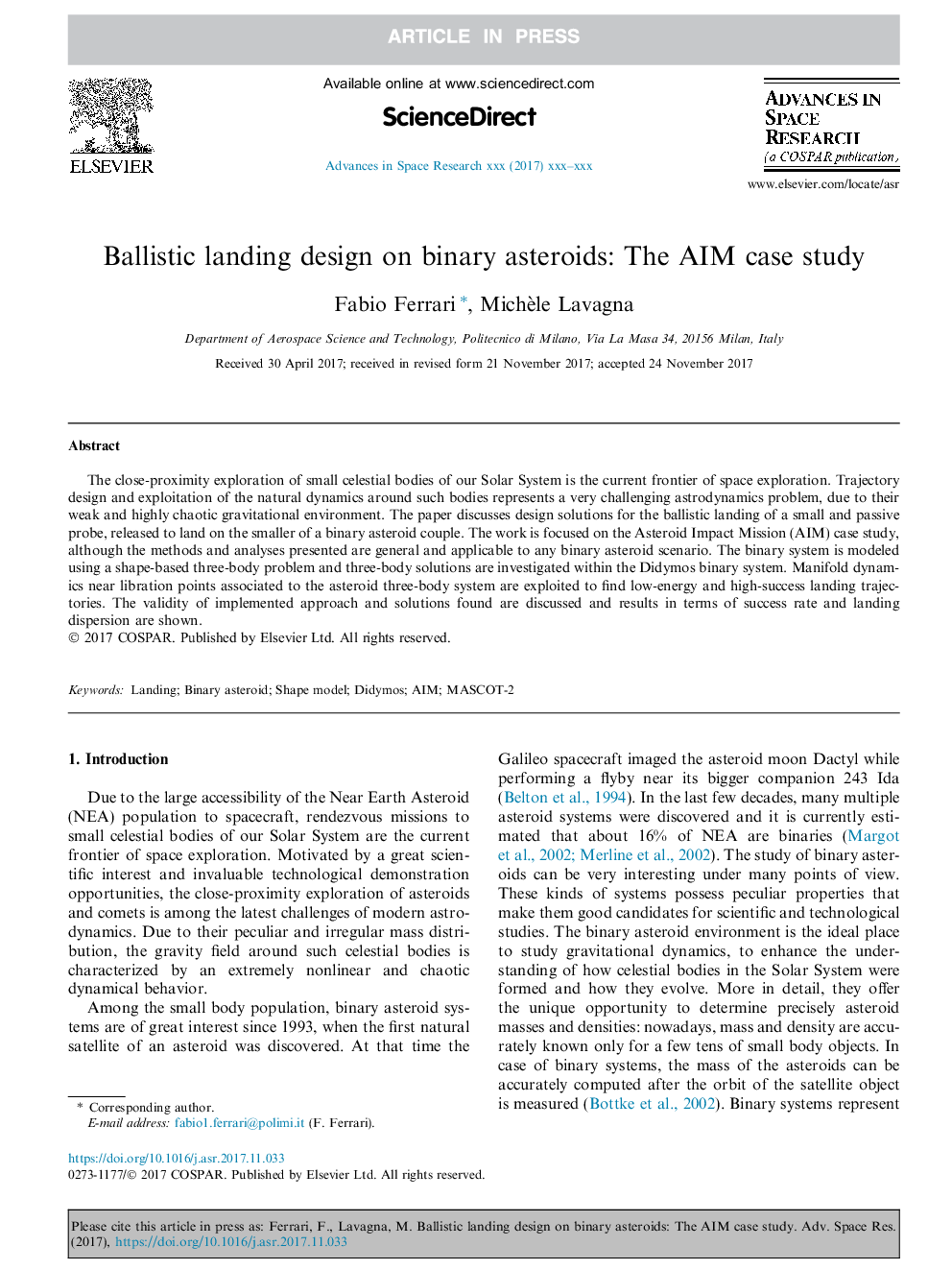| Article ID | Journal | Published Year | Pages | File Type |
|---|---|---|---|---|
| 10156410 | Advances in Space Research | 2018 | 16 Pages |
Abstract
The close-proximity exploration of small celestial bodies of our Solar System is the current frontier of space exploration. Trajectory design and exploitation of the natural dynamics around such bodies represents a very challenging astrodynamics problem, due to their weak and highly chaotic gravitational environment. The paper discusses design solutions for the ballistic landing of a small and passive probe, released to land on the smaller of a binary asteroid couple. The work is focused on the Asteroid Impact Mission (AIM) case study, although the methods and analyses presented are general and applicable to any binary asteroid scenario. The binary system is modeled using a shape-based three-body problem and three-body solutions are investigated within the Didymos binary system. Manifold dynamics near libration points associated to the asteroid three-body system are exploited to find low-energy and high-success landing trajectories. The validity of implemented approach and solutions found are discussed and results in terms of success rate and landing dispersion are shown.
Keywords
Related Topics
Physical Sciences and Engineering
Earth and Planetary Sciences
Space and Planetary Science
Authors
Fabio Ferrari, Michèle Lavagna,
